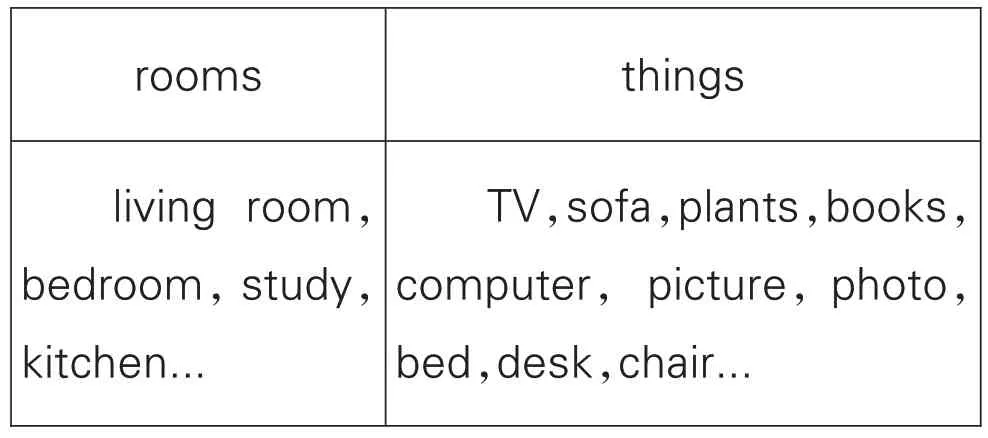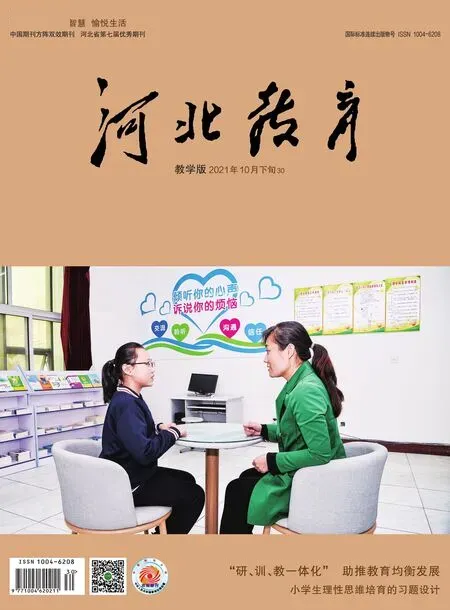高年级对话教学中存在的问题与对策
○李建永
听说能力的培养是小学阶段的核心任务之一,作为小学英语的基础课型,对话课是培养学生听说技能的重要途径。人教版小学英语高年级对话板块一般由 Let’s try 和 Let’s talk 两部分组成。Let’s talk 部分是对话课的核心,通过有意义的对话语篇,将核心句型和词汇融入其中,让学生整体体验词汇和句型的语用情境,并以此为范本,通过模仿、朗读、表演和真实交流等活动,最终形成语言运用能力。
当前,对话教学中存在着主题语境不清晰、思维训练不到位、语言交际不真实等问题。本文将结合人教版小学英语高年级对话板块,分析对话教学中存在的典型问题,并探讨其解决方案。
【教学回放】
教学内容:How can I get there?Part A 对话板块,导入环节

T: Boys and girls. Here come our friends.Who are they?
Ss: Peppa Pig,Father Pig,Mother Pig and George.
T: Yes,the Pig family. Where are they?What are they doing?
Ss: They are outside. They are in a car.
… …
T: Where will they go?Let’s see.
(PPT 依次呈现museum,post office,bookstore。)
T: Where are these places?
(逐段播放动画视频并问答。)
T: Wu Yifan and Robin go out too. Let’s listen and tick.
【诊断分析】
本课的主题语境是人与社会,对话内容贴近生活,简练自然,不仅有核心句型,也包括一些情境语言,渗透着人与人之间应该互相帮助的主题意义。而本课例中,教师创设的语境仅限于家庭成员之间,对话内容只包括核心句型,显得十分机械。并且由佩奇一家的活动过渡到教材人物的活动,造成了情境的割裂和主线不清晰,无法承载本课的主题意义。
【教学重构】

T: Boys and girls. Here are our old friends.Who are they?
Ss: Wu Yifan and Robin.
T: What can you see in the picture?
S1: They are watching a robot.
S2: They look happy.
S3: The pink robot is doing kungfu.
T: Good. Do you have any questions about the picture?
… …
T: You have so many questions. Let’s listen and find the answers.
本课例中,教师紧扣主题,引导学生观察图片,运用自己的语言尝试描述,接着让学生针对图片提出自己的疑问,为开展Let’s try 学习作好“听前”准备。完成听力活动后,教师自然将话题引到博物馆内发生的事情,顺利过渡到Let’s talk 部分的学习。
【教学回放】
教学内容:Whose dog is it?Part B 对话板块,呈现与操练环节
师生简单谈论了对话图片后,教师布置了四个问题,学生带着问题看对话视频。之后,师生共同讨论答案。
T: Let’s check the answers together. The first one,where is Fido now?
Ss: In the kitchen.
T: Yes. What’s Fido doing now?
S1: He is eating.
T: Can Sam play with him now?
… …
【诊断分析】
上述活动中,教师提出的问题几乎就是对话内容的翻版,大部分学生并没有在视听的过程中梳理出需要的信息。此外,教师提出的问题均停留在文本表层,没有帮助学生建立这些信息之间的联系,缺乏有深度的启发学生深入思考的问题,不利于学生概括、推理等能力以及批判性思维的培养。
【教学重构】
T: Boys and girls. We know,Sam and Chen Jie are talking about Fido and Fido is sleeping in the living room. Now,20 minutes has passed. Where is Fido now?What is he doing?Can you guess?
S1: I think Fido is still sleeping in the living room.
S2: Maybe he is playing with Sam now.
T: You all have made a good guess. Now,Let’s listen to the tape and answer the question,what is Fido doing now?
(学生听录音并回答问题。)
T: So Fido isn’t sleeping now. Can Sam play with him this time?Where will they play?Please watch the video and finish the mind map.

T: Can you use one or two sentences to talk about it?
S1: Fido is eating in the kitchen now. Sam will take him to the park.
… …
T: I see.Both people and pets should usually go outside and do some sports because it’s good for our health. Do you agree?
Ss: Yes.
学生通过观看视频完成思维导图后,教师让学生用一到两句话对思维导图进行描述。师生交流过程中,教师适时抛出两个开放性问题,学生基于文本信息和自己的生活经验,主动思考,表达观点。最后,由Fido 的餐后户外活动,联系到人类生活,饭后适量运动、坚持户外活动的健康生活理念得到了浸润。
【教学回放】
教学内容:There is a big bedPart B 对话部分,语言输出环节
T: Now it’s time to talk about your rooms with your partner. Which room do you want to talk about?
Ss: Living room./Bedroom./Study...
T: Good. You can talk about it with the help of this sheet.

【诊断分析】
为确保学生有话可说,教师提供了对话模板,学生只需填空就可完成任务,无需考虑内容的真实性。如此,把本该真实生动的口语交际活动限定在一个特定的“挖空”练习中,学生无法将学到的语言应用到生活情境当中,也就无法促进对话能力的提高和综合语言运用能力的发展。
【教学重构】
T: Boys and girls,I have moved to a new flat. Would you like to have a look?
Ss: Yes.
T: Who wants to visit my home?
(PPT 呈现照片,教师邀请一名学生进行示范性表演。)
T: Welcome to my home. This is the living room.
S: Your living room is so big and clean.
T: Thank you. I clean it every day.
S: There is a big sofa.
… …
T: This time,please take out your photos and invite your friend to your home. Then talk about one or two rooms. You can use the words in the form to help you.

rooms things living room,bedroom,study,kitchen...TV,sofa,plants,books,computer, picture,photo,bed,desk,chair...
师生交流过程中,既有核心句型的使用,又有情感、观点等方面的表达,构成了真实自然的语言交际。教师没有设定对话的框架,有利于学生充分整合新旧语言进行交流,促进了新语言的内化和吸收,完善了学生的知识结构,发展了语言运用能力。

